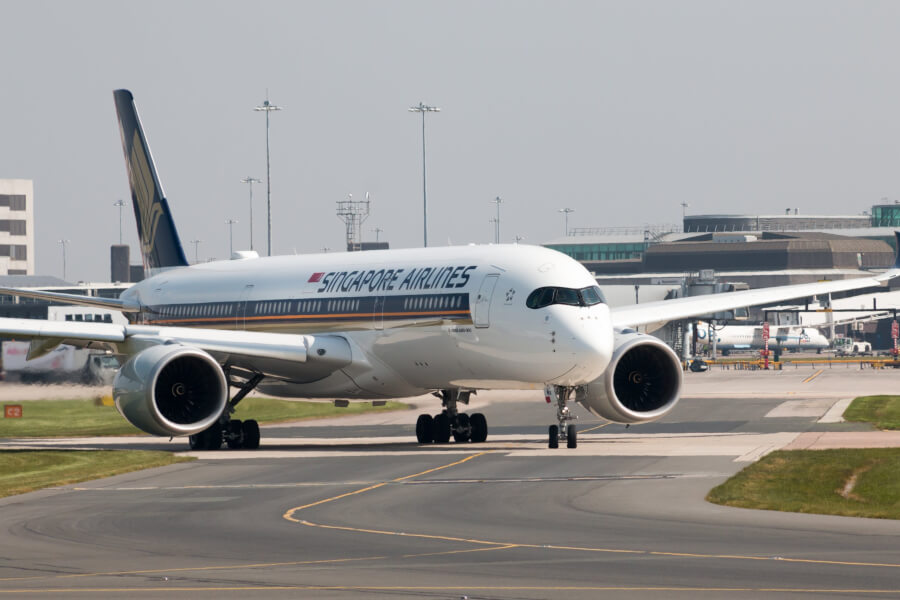 Singapore Airlines reported its net profit more than doubled in the third quarter thanks to a one-time gain from the Air India-Vistara merger. The airline, which owned about 49% of Indian carrier Vistara, completed a merger of Air India and Vistara last November, in a bid to create a dominant full-service airline for the domestic and international markets.
Singapore Airlines reported its net profit more than doubled in the third quarter thanks to a one-time gain from the Air India-Vistara merger. The airline, which owned about 49% of Indian carrier Vistara, completed a merger of Air India and Vistara last November, in a bid to create a dominant full-service airline for the domestic and international markets.
The deal granted Singapore Airlines (SIA) a 25.1% stake in the Air India group, while autos-to-steel conglomerate Tata holds 74.9% of the combined entity. SIA gained from a one-off S$1.10 billion gain from the merger of the two Indian carriers, boosting its bottom line, it said in a statement. The city-state’s flag carrier posted a net profit of S$1.63 billion ($1.22 billion) for the three months ended December 31, compared with S$659 million a year ago, according to a Reuters report.
In its statement, the airline said:
“The Group revenue reached a record $5,219 million in the three months ended 31 December 2024, up $137 million (+2.7%) from the same period last year, spurred by robust demand for air travel in the third quarter of FY2024/25.
“Passenger flown revenue improved by $70 million (+1.7%), with SIA and Scoot carrying a quarterly record of 10.2 million passengers, up 7.2% from the third quarter of FY2023/24. Group passenger load factor fell by 1.0 percentage point to 87.2%, as the 7.2% growth in passenger traffic lagged the capacity expansion of 8.5%. Greater competition due to industry capacity injection continued to put pressure on yields, which dipped 4.5% to 10.7 cents per revenue passenger-kilometre.
“Cargo flown revenue increased by $54 million (+9.7%), with loads up 14.6% year-on-year, bolstered by robust demand due to strong e-commerce activity, a step up in freighter charters, and a boost in perishables traffic. Cargo capacity rose 12.8% while the cargo load factor was 0.9 percentage points higher at 56.4%, with yields 4.5% lower.
“Group expenditure grew $117 million (+2.6%) to $4,590 million, driven by higher non-fuel expenditure of $258 million (+8.6%), and partially offset by the decline in net fuel cost of $142 million (-9.8%). Effective cost management measures kept the rise in non-fuel expenditure below the growth in overall capacity (+10.1%), despite inflationary pressures. Net fuel cost was lower due to a 20.9% drop in fuel prices before hedging (-$359 million), partially offset by the higher volume uplifted (+$162 million), and the swing from a fuel hedging gain in the previous year to a loss (+$98 million).
As at 31 December 2024, the Group’s operating fleet comprised 207 passenger and freighter aircraft with an average age of seven years and six months. SIA added one Airbus A350-900 in December 2024, giving it 146 passenger aircraft1 and seven freighters. Scoot added three Embraer E190-E2 aircraft in the third quarter, bringing its operating fleet to 54 passenger aircraft2. The Group has 81 aircraft on order3.
SIA launched services to Beijing Daxing (China) in November 2024, while Scoot began Embraer E190-E2 operations to Malacca (Malaysia) in October 2024 and Phu Quoc (Vietnam) in December 2024. As of 31 December 2024, the Group’s passenger network covered 129 destinations in 36 countries and territories4, with SIA serving 80 destinations and Scoot serving 72 destinations. The cargo network reached 133 destinations in 37 countries and territories.
Following the launch of flights to Padang (Indonesia) and Shantou (China) in January 2025, Scoot will introduce twice-weekly services to Iloilo City (the Philippines) on 14 April 2025, and increase that to four-times weekly from June 2025. Scoot will also start thrice-weekly direct services to Vienna (Austria) on 3 June 2025. SIA will ramp up services to Brisbane (Australia), Colombo (Sri Lanka), and Johannesburg (South Africa) during the Northern Summer 2025 operating season (30 March 2025 to 25 October 2025).
The airline also said:
“The demand for air travel is expected to stay healthy heading into the last quarter of FY2024/25, even as the operating landscape continues to be competitive. The Group remains nimble and agile, adjusting its network and capacity as it navigates the industry-wide normalisation of yields and capacity.
“While e-commerce and perishables traffic are expected to hold up cargo demand, yield moderation is likely to persist as airlines across the industry resume passenger flights and increase their bellyhold cargo capacity, and as shippers move to lock down their space requirements and rates in advance. The Group will closely monitor market developments and optimise freighter deployment as needed.
“The airline industry faces headwinds such as cost inflation, supply chain constraints, geopolitical tensions, economic uncertainty, and increased competition. The Group is well-positioned to navigate these challenges thanks to its robust foundations, which include its strong financial standing, a talented and dedicated workforce, and industry-leading digital capabilities.”


